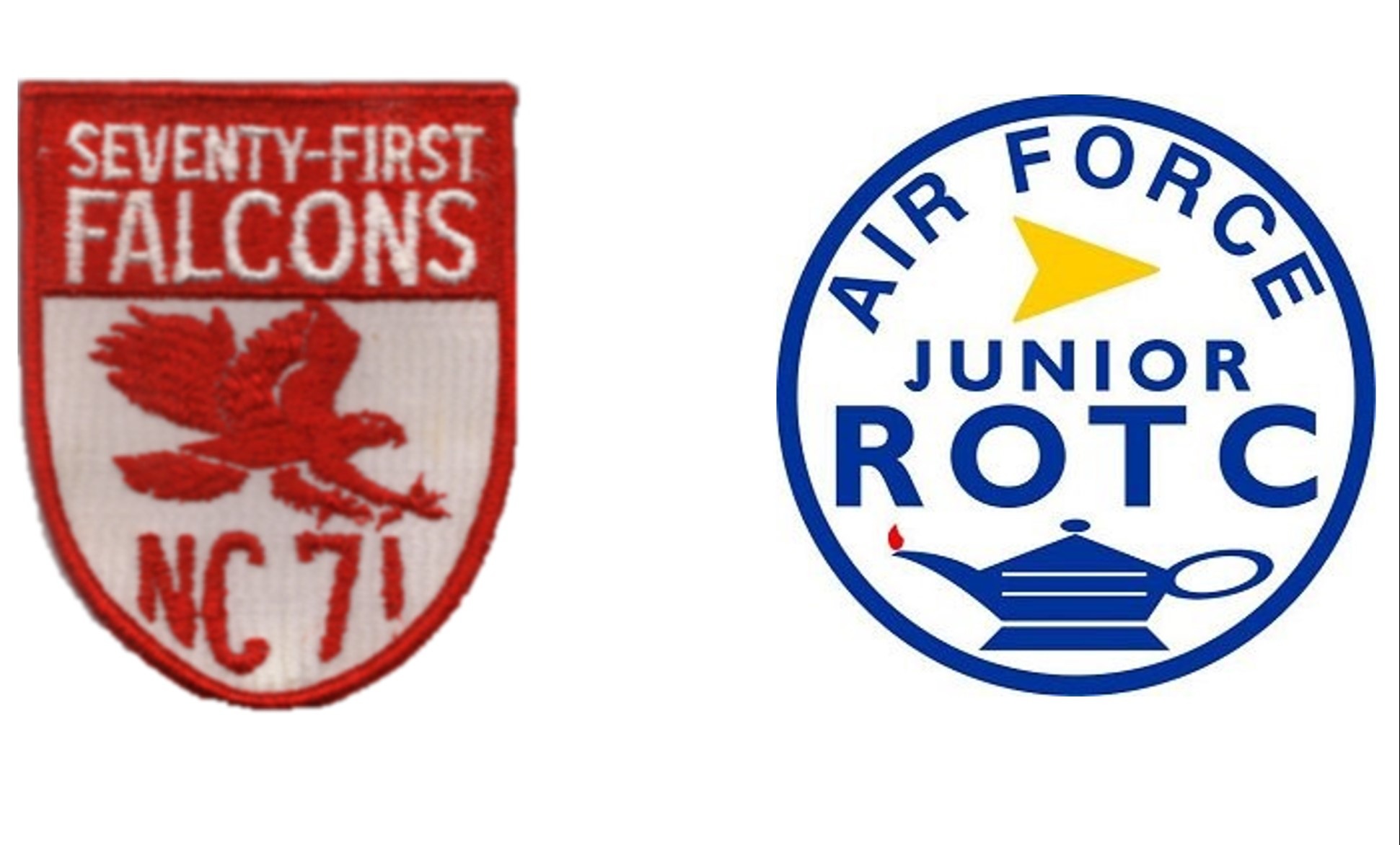AFJROTC-NC71
"Integrity First, Service Before Self, Excellence In All We Do"

Foreword:
The NC-071 Air Force JROTC program was established at Seventy-First High School by an agreement between the Cumberland County School District and the United States Air Force in 1972. The Senior Aerospace Science Instructor (SASI) and the Aerospace Science Instructor (ASI) are both retired Air Force personnel with over 45 years of combined Air Force experience. These instructors have an extensive background in leadership, management, and teaching.
The students who enroll in Air Force Junior ROTC are referred to as Cadets. The entire group of cadets is referred to as a Group. The Cadet Group is owned, managed, and operated by Cadet Officers and Cadet Non-commissioned Officers. Using this cadet organization structure allows cadets to learn leadership skills through direct activities.
The cadet guide contains policy, guidance, requirements, and rules of conduct for AFJROTC cadets. Each cadet will study this handbook and be held responsible for knowing its contents. The guide describes cadet operations, cadet rank and chain of command, job descriptions, procedures for promotions, awards, grooming standards, and uniform wear. It supplements AFJROTC and Air Force directives. This guide establishes the standards that ensure the entire Cadet Group works together towards common goals and will earn pride in unit achievements.
We believe most cadets will voluntarily work for the betterment of the Group if they are aware of the goals and mission of the unit. You, as a Cadet, are responsible for obtaining a thorough understanding of the contents of this cadet guide. Only then can you maximize your experience and participation in the AFJROTC program and apply these standards to the benefit of yourself and NC-071. We wish each of you great success in your academic and JROTC endeavors.
Introduction:
The purpose of these guidelines is to promote a better understanding of the individual cadet’s role and responsibilities in the NC-071 AFJROTC program. This provides cadets with a better sense of what is expected of a student in the Air Force JROTC program by answering some of the most commonly asked questions. The cadets who follow these guidelines will greatly increase their opportunity for success. This guide will answer questions pertaining to: classroom rules, promotion merit and demerit system, military customs and courtesies, the Air Force Chain of Command, promotion eligibility, the Air Force Song and the Pledge of Allegiance. Each individual cadet in the NC-071 program is expected to know the mission of Air Force JROTC, the Chain of Command, the National Anthem, and the Pledge of Allegiance. By following the AFJROTC Mission and other rules in this handout, cadets will be successful individually and contribute to the success of NC-071.
US Air Force Mission: The mission of the United States Air Force is to fly, fight and win…in air, space, and cyberspace.
AFJROTC Mission: The mission of AFJROTC is to “Develop citizens of character.”
AFJROTC Purpose: The purpose of the AFJROTC program is to instill in students the values of citizenship, service to the United States, personal responsibility, and a sense of accomplishment.
Nc-071 Air Force JROTC Goals: (AY 2025-26)
There are six primary NC-071 goals which are broken down into three categories: cadet, school and community. There are two in each category.
Win the 1st place Overall Trophy during the Northside Drill Competition of the Spring 2026 semester
Plan an informal JROTC cookout for December 2025 to establish camaraderie within the corps
Visit 3 middle schools throughout the 2025-2026 academic year
Achieve an 80% LDR participation rate within the corps throughout the 2025-2026 academic year
Organize a Cadet Mentoring Day, a planned JROTC field trip in which we collaborate with a local middle school in Fayetteville to provide academic tutoring and mentoring by teaching students critical leadership qualities and physical fitness routines
Contact a non-profit organization and support their efforts to assist the community
